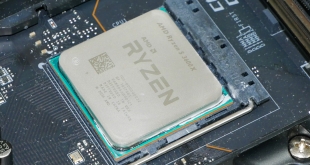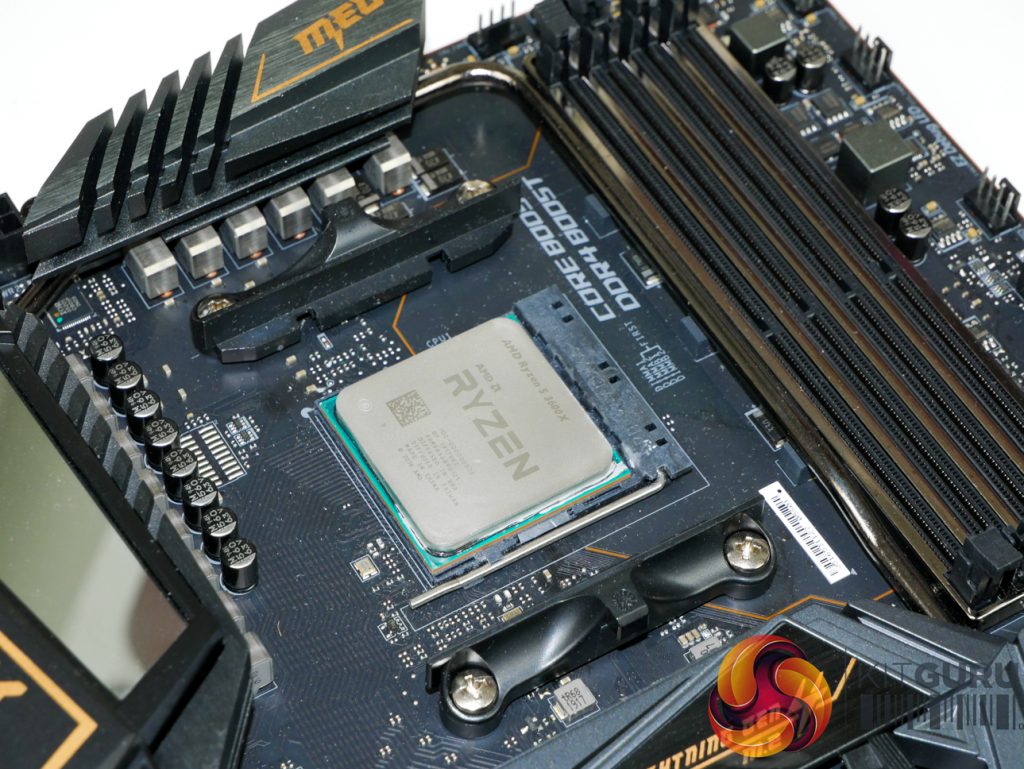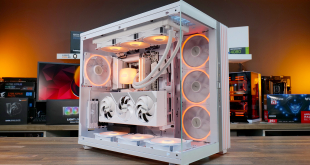
Priced squarely to compete with Intel’s Core i5-9600K at the ever-attractive £240 price point, AMD Ryzen 5 3600X continues the Ryzen 5 x600 tradition. That tradition is to offer six cores with Simultaneous Multi-Threading (SMT) doubling the thread count to a dozen. This time, however, those six cores that boost up to 4.4GHz, are based on AMD’s brand-new Zen 2 architecture, and they’re built using TSMC’s leading 7nm FinFET process.
We have already seen the success that Zen 2 on 7nm has brought in the eight-core Ryzen 7 3700X and the twelve-core Ryzen 9 3900X flagship, so what can it do for this mid-range part?
Although it is easy to view the Ryzen 5 3600X as half a Ryzen 9 3900X, it would be more accurate to perceive the processor as a cut down Ryzen 7 3700X/3800X. The 95W-TDP hexacore utilises a single CCD, comprised of two core complexes (CCXs). This means that one core per CCX is disabled, but AMD retains the full whack of L3 cache that is shared between each core within the CCX.
Just like the other Zen 2 processors, Ryzen 5 3600X features a segregated IO die that most notably contains the memory controller and is fabbed on older (cheaper), arguably more mature 12nm process technology.
Infinity Fabric is the interconnect that keeps things communicating smoothly. Just like with all other Zen-based CPUs, the Infinity Fabric frequency is tied to the memory clock (up to a maximum of 1800MHz by default for Zen 2), hence higher-speed RAM up to 3600MHz should show latency and performance benefits outside of just memory-intensive workloads. Expensive sticks of RAM may be hard to justify at this market segment, but we’d certainly advise looking for 3000MHz DDR4 kits as a minimum.
| CPU | AMD Ryzen 9 3900X |
AMD Ryzen 7 3700X |
AMD Ryzen 5 3600X |
AMD Ryzen 7 2700X | Intel Core i7 9700K |
Intel Core i5 9600K |
| CPU Architecture | Zen 2 | Zen 2 | Zen 2 | Zen+ | Coffee Lake | Coffee Lake |
| CPU Socket | AM4 | AM4 | AM4 | AM4 | LGA 1151 rev. 2 | LGA 1151 rev. 2 |
| Core / Threads |
12 / 24 | 8 / 16 | 6 / 12 | 8 / 16 | 8 / 8 | 6 / 6 |
| Base Frequency | 3.8GHz | 3.6GHz | 3.8GHz | 3.7GHz | 3.6GHz | 3.7GHz |
| All-Core Frequency | Up to 4.6GHz | Up to 4.4GHz | Up to 4.4GHz | Up to 4.3GHz | 4.6GHz | 4.3GHz |
| Boost Frequency | Up to 4.6GHz | Up to 4.4GHz | Up to 4.4GHz | Up to 4.3GHz | 4.9GHz | 4.6GHz |
| Unlocked Core Multiplier | Yes (x0.25 granularity) | Yes (x0.25 granularity) | Yes (x0.25 granularity) | Yes (x0.25 granularity) | Yes (x1 granularity) | Yes (x1 granularity) |
| L3 Cache | 64MB | 32MB | 32MB | 16MB | 12MB | 9MB |
| Max. Memory Channels |
2 (DDR4) | 2 (DDR4) | 2 (DDR4) | 2 (DDR4) | 2 (DDR4) | 2 (DDR4) |
| Max. Memory Frequency (Native) |
2667 to 3200MHz | 2667 to 3200MHz | 2667 to 3200MHz | 1866 to 2933MHz | 2666MHz | 2666MHz |
| CPU PCIe Lanes | 16+4+4 PCIe Gen 4 | 16+4+4 PCIe Gen 4 | 16+4+4 PCIe Gen 4 | 16+4+4 PCIe Gen 3 | 16 PCIe Gen 3 | 16 PCIe Gen 3 |
| Manufacturing Process | 7nm | 7nm | 7nm | 12nm | 14nm++ | 14nm++ |
| TDP | 105W | 65W | 95W | 105W | 95W | 95W |
| MSRP | $499 | $329 | $249 | $329 | $374-385 | $262-263 |
| UK Street Price (July 2019) | £480 | £320 | £240 | £240 | Approx. £380 | Approx. £220 |
As AMD promised all those years ago, the new Ryzen 5 3600X processor is supported by the AM4 platform. There are a few caveats to watch out for, however, as older B350/X370 and B450/X470 motherboards will need a BIOS update to work with the chip. I wouldn’t bother looking at A320 motherboards if you’re spending £240 on a Ryzen 5 processor, even if there are BIOS situations where the chip may be compatible. B450 solutions are worth the extra money in this scenario.
Likewise, I don’t think X570 motherboards, which start at £160, are generally a good idea for Ryzen 5 3600X buyers. Saving £60-80 by going for a solid B450 option is smarter, even if you do lose out on PCIe Gen 4.0 support (unless the suggestions of backwards compatibility are extended more widely). We must, however, point out that Ryzen 3000-compatible BIOSes with some older boards have proven flaky in our testing. That’s not to say that the BIOS stability of many X570 boards is much of an improvement at the time of writing.
 KitGuru KitGuru.net – Tech News | Hardware News | Hardware Reviews | IOS | Mobile | Gaming | Graphics Cards
KitGuru KitGuru.net – Tech News | Hardware News | Hardware Reviews | IOS | Mobile | Gaming | Graphics Cards



